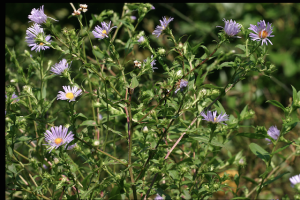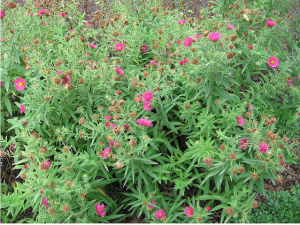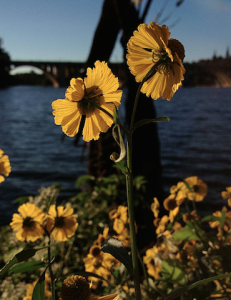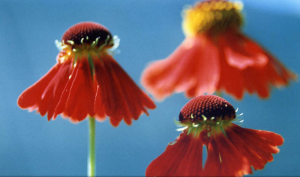There are two strong themes running in the gardening community right now: ecological sensitivity and saving our pollinators. The drumbeat sounding out the plight of our planet has been present since writers like Rachel Carson (Silent Spring) pointed to the impact of human choices on our environment and got more momentum with James Lovelock’s Gaia theory of the earth as a super-organism. We are exhorted to keep our footprint small so that Earth can recover. And within the last few years, an alarm has sounded about amphibian deaths and declining pollinators–honey bees, monarch butterflies and other insects. So, we gardeners try to do our best to mitigate the damage. We plant pollinator habitats and become more aware of organic approaches as opposed to the “spray to kill” regimes.
Most of us have heard that it is a good idea to plant natives. Why? Because there is an interrelationship between our native plants and our local fauna. There is also often a natural relationship between native plants and the surrounding plant community itself as they may support the growth or limit the spread of adjacent plants.
So, what constitutes your native plant? Is it from your region? (Mid Atlantic) From your state (Maryland?) Does it matter? It can. We have varied microclimates as well as different growing zones from Maryland’s coastal plains, through the Piedmont and on out to the Appalachians. Not only soil types but growing zones change from one to the next. It stands to reason that plants native to that area may well have developed to thrive best there or have adapted over much time i.e. a local genotype. How likely it is that a gardener is going to find a source growing “Native Plants” at this level of detail? Pretty slim. A nursery may source stock well outside its point of retail sale. So, most of us compromise on the “ideal” since a cultivar is all we can find to purchase.
The whole point of going with the “straight species” is that they are open-pollinated. This provides the very necessary genetic diversity. And this genetic diversity is what comes into play when great stresses occur– for example, climate change effects or a specific disease that attacks a species. It helps the species find a way to recover.
Also, the straight species seems to attract the highest numbers of pollinators and provides more pollen or nectar and/or more flowers per plant. For those of us with pollinator gardens, it is best to be aware of this.
Now, armed with this knowledge, we go to a nursery to find one of the straight species but…there isn’t one. What we may find instead is a “Nativar”, a cultivar of a native plant. A plant may have developed a unusual feature (color, form, etc.) spontaneously, which is then selected and propagated vegetatively because it is interesting to someone. Plants may be the result of deliberate nursery-led hybridization or more rarely, a natural hybridization where two populations come into contact. Then there is the genetic engineering which is going on in places like the cut flower industry! Cultivars are usually for the garden’s human “Wow” factor. (FYI-Hybrids are the crossing of two species.)
These Nativars may be sterile or only be available as cloned plants from a nursery and become widely grown, so that there is a great winnowing down of genetic diversity. Second, the traits humans select for often are at odds with what pollinators need, contain aberrations that repel pollinators or structurally interfere with procuring nectar or pollen from the flowers. Further, the Nativars may have a different flowering period. If the Nativars do set seed and cross with the open pollinated species, will that downgrade the species capacity to support local flora? Suddenly, it feels like quite a burden to select plants for the garden and be ecologically mindful.
Some points–the closer the flowers are in color and form to the species, the lower the potential negative impact of the Nativar. If there is a choice for lower petal count, giving greater access to pollen areas, choose that. Still, there is a great deal that we do not know; studies are currently underway to compare the impact of Nativars on pollinators in comparison to the open pollinated Natives. Generally, go with open pollinated for the more ecologically sound choice.
***
Pictured are the native open pollinated NE Aster, so important as late blooming nectar providers, especially for monarch and honeybees. Alma Potschke, a pink and vigorous “Nativar” of the NE Aster was not nearly as attractive to pollinators as the species. Given a choice, they go to the native aster.
- Aster Nova-anglicae by Brian Arthur
- Alma Potschke by Digigalos
The same can be said of native Heleniun (Sneezeweed) and this cultivar, Moreheim Beauty. The native performed better. The cultivar appears too different in color and form to be recognizable.
- Native Helenium autumnale by Fritzflohrreynolds
- Helenium cv Morheim by Ghislain118 Beauty






